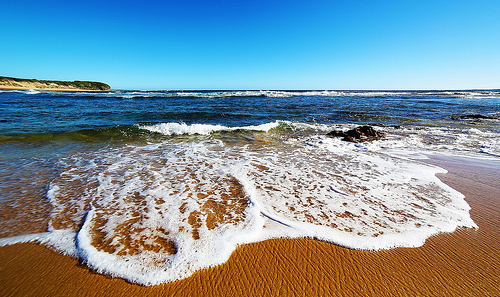
The exploitation and protection of marine coastal regions require a predictive capability at space scales that so far have been forbidden due to the numerical and computational challenges involved. The frontier-resolution representation of the global ocean circulation delivered by ROMEO, the new PRACE project coordinated by CMCC researcher Dorotea Iovino, will allow us to better understand oceanic mesoscale dynamics and climate evolution while paving the way for the development of a new, more integrated and improved ocean forecast system to support ocean related industrial activities, such as offshore activities for wind and tidal energy production and fisheries activities, facilitate the implementation of European maritime and environmental policies (e.g. Marine Strategy Framework Directive, MSFD) and develop risk-mapping tools for the coastal areas.
Many questions about climate changes are largely linked to the oceanic mesoscale dynamics. These processes typically have horizontal scales varying from 200 km in the tropics to few km at high latitudes and over continental shelf and permeate the ocean at all latitude bands. Satellite images and in situ data show that the global ocean is a highly turbulent system over a wide range of space and timescales.
How mesoscale ocean features (eddies, fronts, sea-surface temperature gradients) govern the time-mean ocean and ocean variability? And what factors are most important in representing the mean state of ocean upper, intermediate and deep circulation?
The ROMEO – Understanding the ROle of Mesoscale Eddies in the global Ocean project aims to advance our knowledge about the role of ocean mesoscale circulations and variability and more credibly simulate mesoscale dynamics and its role in climate evolution, by delivering a frontier-resolution representation of the global ocean circulation.
The project is coordinated by CMCC ocean and sea ice modeler Dorotea Iovino. As NEMO Officer, she leads the CMCC effort within the NEMO System Team in developing and maintaining the model system, and is a member of the NEMO sea ice Working Group since 2016.
Other CMCC researchers involved in the project are Simona Masina, Andrea Cipollone, Pier Giuseppe Fogli, and Enrico Scoccimarro.
The ROMEO project has been selected by PRACE (Partnership for Advanced Computing in Europe), the partnership that provides high computing capacity for scientific projects in order to improve research while supporting the latest generation technological infrastructures. The new project will use the powerful high performance computing infrastructures of MARCONI Broadwell and MARCONI KNL (based at CINECA, Bologna, Italy), thank to the support of the CINECA team.
More in detail, the CMCC global eddying ocean model, GLOB16, based on state-of-the-art NEMO framework (Nucleus for European Modelling of the Ocean), will be used to produce a long hindcast simulation in order to investigate how mesoscale features (eddies, fronts, sea-surface temperature gradients) govern the mean state and ocean variability. The ocean configuration has 1/16º horizontal resolution which allows to realistically represent the life cycle of baroclinic eddies almost over the entire domain. So far, GLOB16 represents the NEMO global configuration having the highest horizontal resolution employed in such long simulation.
The strategy adopted to run the experiment follows a well-established protocol in the ocean modelling community, proposed by the CLIVAR Working Group on Ocean Model Development (WGOMD). It provides a framework to evaluate ocean model performance, to study mechanisms of ocean phenomena and their variability on different timescales.
The numerical exercise proposed in ROMEO is appropriate for studying the dynamics of the 3D ocean circulation on short timescales, but also to investigate the long-term evolution of deep-water masses. It will allow to investigate mechanisms for seasonal, interannual and decadal variability, and to evaluate the robustness of mechanisms.
The CMCC Foundation has a long experience in developing numerical models and performing numerical simulations, capable of credibly representing fundamental ocean and climate processes.
The CMCC is a member of the NEMO consortium, and largely contributes to the continuous improvement of the modelling framework.
The ODA team has been already involved in PRACE activities through Ens4Ocean – ENSemble-based approach for global OCEAN forecasting, a project coordinated by CMCC Foundation’s researcher Simona Masina.
Results of the first implementation and run of the eddying ocean model have been presented in a paper published in Geoscientific Model Development.
GLOB16, which is the CMCC most-advanced global ocean component, constitutes the modelling component of the CMCC operational short-term forecast system of the global ocean, meant to serves as the backbone for downscaling methodologies of ocean forecasting and reanalysis to the regional and coastal areas.
Read also:
- 15th Project PRACE call – the awarded project ROMEO
- The news “Research and supercomputers to understand the sea“
- The news ” Oceans: studying the past to better understand the future“
- The integral version of the paper: Iovino D., Masina S., Storto A., Cipollone A., Stepanov V. A 1/16° eddying simulation of the global NEMO sea-ice–ocean system, Geoscientific Model Development, DOI: 10.5194/gmd-9-2665-2016, 2016


